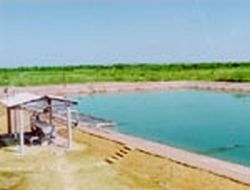
The abundantly available energy source across the world – the sun – seems to be the best alternative to its non-renewable counterparts. Here is an inspiring new way of tapping solar energy.
It is through the use of ‘solar ponds’. Solar ponds can collect energy in a large scale, having integral heat storage capable of supplying thermal energy. It can be used for applying in various fields like — process heating, water desalination, refrigeration, drying and power generation.
Solar ponds are the best energy-trapping sources, especially in the developing countries as it can be constructed anywhere, and is also economical. It works best at places where low cost salt and bittern are available. Since, it requires good supply of sea water or water for filling and flushing, high solar radiation, and land at low cost, coastal areas are their ideal locations.
This is how a solar pond works:
A solar pond has three zones. The top zone is the surface zone, or UCZ (Upper Convective Zone), which is at atmospheric temperature and has little salt content. The bottom zone is very hot, 70°- 85° C, and is very salty. It is this zone that collects and stores solar energy in the form of heat, and is, therefore, known as the storage zone or LCZ (Lower Convective Zone). Separating these two zones is the important gradient zone or NCZ (Non-Convective Zone). Here the salt content increases as depth increases, thereby creating a salinity or density gradient. If we consider a particular layer in this zone, water of that layer cannot rise, as the layer of water above has less salt content and is, therefore, lighter. Similarly, the water from this layer cannot fall as the water layer below has a higher salt content and is, therefore, heavier. This gradient zone acts as a transparent insulator permitting sunlight to reach the bottom zone but also entrapping it there. The trapped (solar) energy is then withdrawn from the pond in the form of hot brine from the storage zone.




